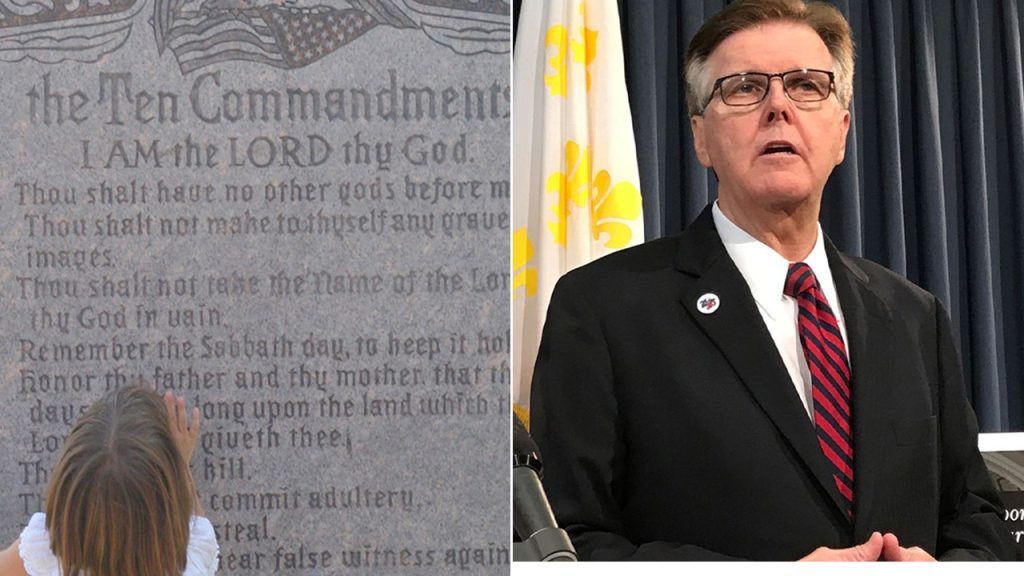Texas Lt. Gov. Dan Patrick has pledged to pass a bill that would require public school and college classrooms in Texas to display the Ten Commandments. He criticized Texas state House Speaker Dade Phelan for killing a state Senate bill that would have implemented this requirement, vowing to reintroduce the measure. Patrick emphasized the importance of recognizing America’s heritage and the foundational role of the Ten Commandments in American and Texas law. The bill would mandate Texas public elementary and secondary schools to display the Ten Commandments in each classroom, although currently, no such requirement is in place.
The feud between Patrick and Phelan escalated after Patrick presided over the impeachment trial of Texas Attorney General Ken Paxton earlier this year. Patrick accused Phelan of killing the bill by letting it linger in committee, preventing it from reaching a floor vote. Meanwhile, Louisiana recently became the first state to require the display of the Ten Commandments in public school classrooms, sparking backlash from civil rights groups including the American Civil Liberties Union. Notre Dame Law School Professor Richard W. Garnett noted that other states may follow Louisiana’s lead in passing similar measures but highlighted the potential legal challenges these laws may face, particularly regarding the coercive effect of displaying religious symbols in classroom settings.
Garnett emphasized that the Supreme Court will likely consider whether displaying the Ten Commandments in classrooms could be coercive on children given their age and the educational environment. Challengers of these laws may argue that the U.S. is a religiously diverse nation and that public schools should remain neutral and inclusive of all beliefs. The ACLU and other civil rights groups opposed Louisiana’s law, asserting that the government should not impose religious doctrines on students and families in public schools. They highlighted the importance of the First Amendment in allowing individuals to determine their religious beliefs without government interference.
While Patrick aims to reintroduce the bill requiring the display of the Ten Commandments in Texas classrooms, Phelan’s stance remains unclear. As the political debate continues, the issue of religious displays in public schools raises questions about the balance between honoring America’s heritage and respecting religious diversity. Garnett acknowledged that the legal landscape surrounding these measures is evolving, and it remains to be seen how courts will interpret the constitutionality of such requirements. The clash between religious symbolism, educational environments, and constitutional rights underscores the complex intersection of religion and public education in the United States, setting the stage for potential legal battles and further debate.


